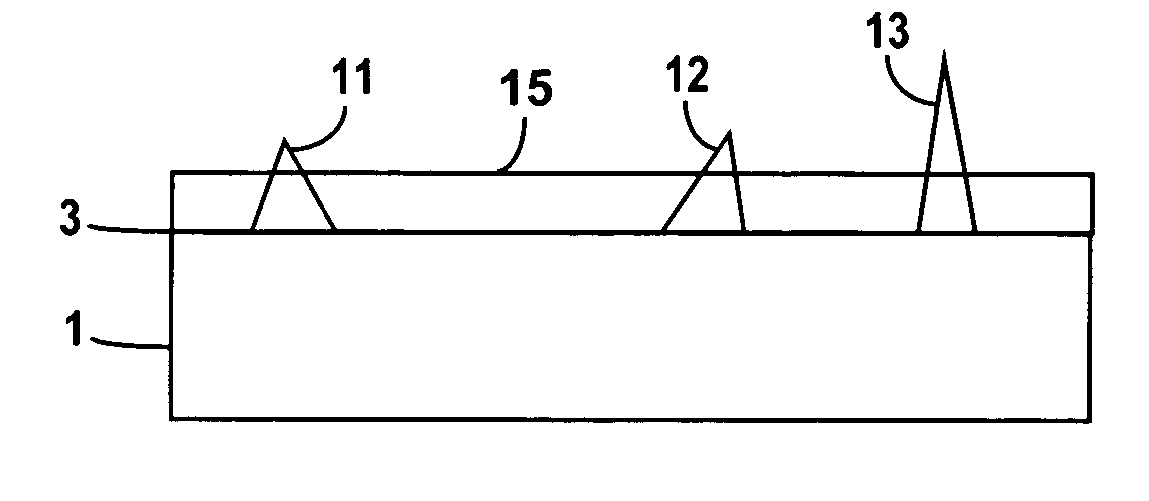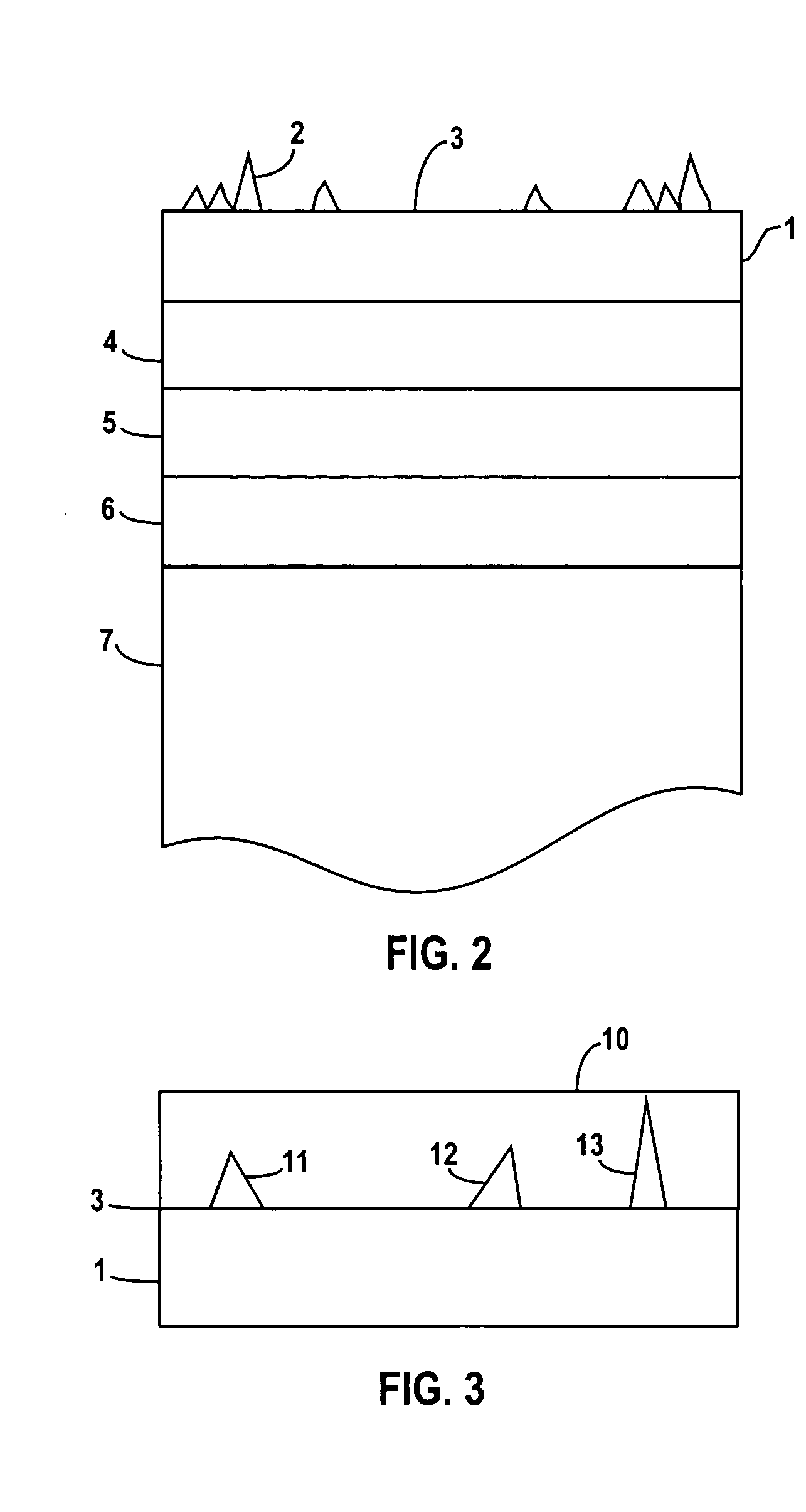Self-masking defect removing method
a defect removal and defect technology, applied in the field of self-masking defect removal, can solve the problems of growth defects on the surface, adversely affecting the ability to join surfaces, and negatively affecting the yield of integrated circuit fabrication, and achieve the effect of simple wafer surface cleaning
- Summary
- Abstract
- Description
- Claims
- Application Information
AI Technical Summary
Benefits of technology
Problems solved by technology
Method used
Image
Examples
first embodiment
[0022] According to the first step, the coating layer 10 comprises a photoresist layer. It is preferable that the height of the photoresist layer exceeds the height of the defects to ensure that the resulting surface is planar, in order to enable defects to be successfully revealed during a subsequent thinning process. Generally, for epilayers on GaSb and InAs substrates, the photoresist layer has a thickness from about 5 to about 10 microns and preferably of about 8 microns. This thickness is usually sufficient to uniformly cover all defects.
second embodiment
[0023] According to the first step, the coating layer 10 comprises a deposited silicon oxide film or a deposited silicon nitride film having, for example, a thickness from about 1000 to about 6000 Angstrom. Oxide and nitride films can be deposited using a plasma enhanced chemical vapor deposition (PECVD) system at 100-300° C. and are controlled to yield low stress films on the host wafer.
[0024]FIG. 4 shows a second step of the method, where the protective layer 10 is thinned to form a thinned protective layer 15. The thinning step allows to selectively reveal portions of the protruding defective structures 11, 12, and 13, at the same time protecting the remainder of the surface 3 of the semiconductor 1. For example, in order to reveal defects having a height larger than 0.5 microns, the photoresist layer can be thinned to 0.5 microns.
[0025] In the photoresist layer embodiment, thinning is preferably accomplished using an Inductively Coupled Plasma (ICP) oxygen process that enables ...
PUM
| Property | Measurement | Unit |
|---|---|---|
| thickness | aaaaa | aaaaa |
| thickness | aaaaa | aaaaa |
| thickness | aaaaa | aaaaa |
Abstract
Description
Claims
Application Information
 Login to View More
Login to View More - R&D
- Intellectual Property
- Life Sciences
- Materials
- Tech Scout
- Unparalleled Data Quality
- Higher Quality Content
- 60% Fewer Hallucinations
Browse by: Latest US Patents, China's latest patents, Technical Efficacy Thesaurus, Application Domain, Technology Topic, Popular Technical Reports.
© 2025 PatSnap. All rights reserved.Legal|Privacy policy|Modern Slavery Act Transparency Statement|Sitemap|About US| Contact US: help@patsnap.com



